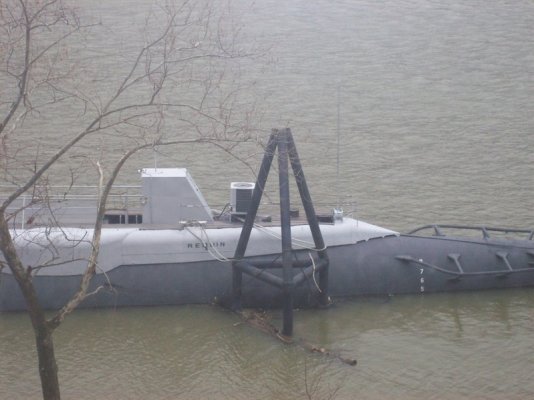Or, maybe it was just cheaper to build 'em like that later.
[-]Ding[/-] Aa-oo-gah.
By the time the 1960s engineers finished designing a plant that could keep up with a 30-knot carrier, there wasn't much left over for non-essentials like habitability or safety... but damn could the LA class accelerate. Kinda like living in a Ferrari for six months.
An engineering computer simulation on an older class of submarine included a casualty procedure for abandoning the engineering spaces in the event of a major rupture to a steam line. The logic was that you'd scamper forward (or dive into the bilge) before the steam superheated your assets. It was expected that you'd have 5-10 minutes.
Then the Naval Research Lab moved the hulk of the ex-USS SHADWELL onto their property, wired it with sensors, and carried out a number of fire/flooding/steam rupture experiments. (Nuclear "Mythbusters".) Horribly labor-intensive and expensive but even more horribly illuminating! A couple years after we read about the experiments, a SHIPALT installed a 700-psig air line directly over the desk of the Engineering Officer of the Watch and his three subordinates (Reactor, Electrical, & Propulsion). The area around those four watchstanders was enclosed with airtight bulkheads and a sliding door with a big lock. Shortly afterward the "evacuate the engineroom" casualty procedure was changed to "Slam the door, lock 'em out, and dump the air in the space to hold off the steam while you drive the OOD to the surface. Pray that the air lasts long enough for the OOD to remember how to use the remote controls to vent the engineroom overboard". Turns out that the NRL research indicated a survival time of more like 90 seconds... unless you happened to be standing watch within the confines of the 700-psig air blast, which hurts less than the 500-psig steam blast. Or so I'm told.
That type of awareness did tend to produce submariners who practiced damage control from hell. The final exam for submarine qualification (silver dolphins) consisted of mustering with the XO, donning an emergency air mask, putting its naugahyde carry bag over your head (and mask), and feeling around with the air hose for a supply manifold. Once you were plugged in (and hopefully breathing), you'd show&tell the XO where to find all the DC gear within reach. Then you'd unplug from your air manifold, feel your way (blind) to the next manifold, plug in, take a deep cleansing breath, and repeat your lecture on DC gear in that new location. After about 20-30 iterations you'd have persuaded the XO (and all your shipmates) that you knew how to handle firefighting in a smoke-filled compartment.
And I think the lessons learned from the LA class habitability issues are paying off in the VIRGINIA class. We'll have to hear from a board member with that experience, somebody other than me!
But to get back on thread track, submarines use front-loading washing machines with really good gaskets...


